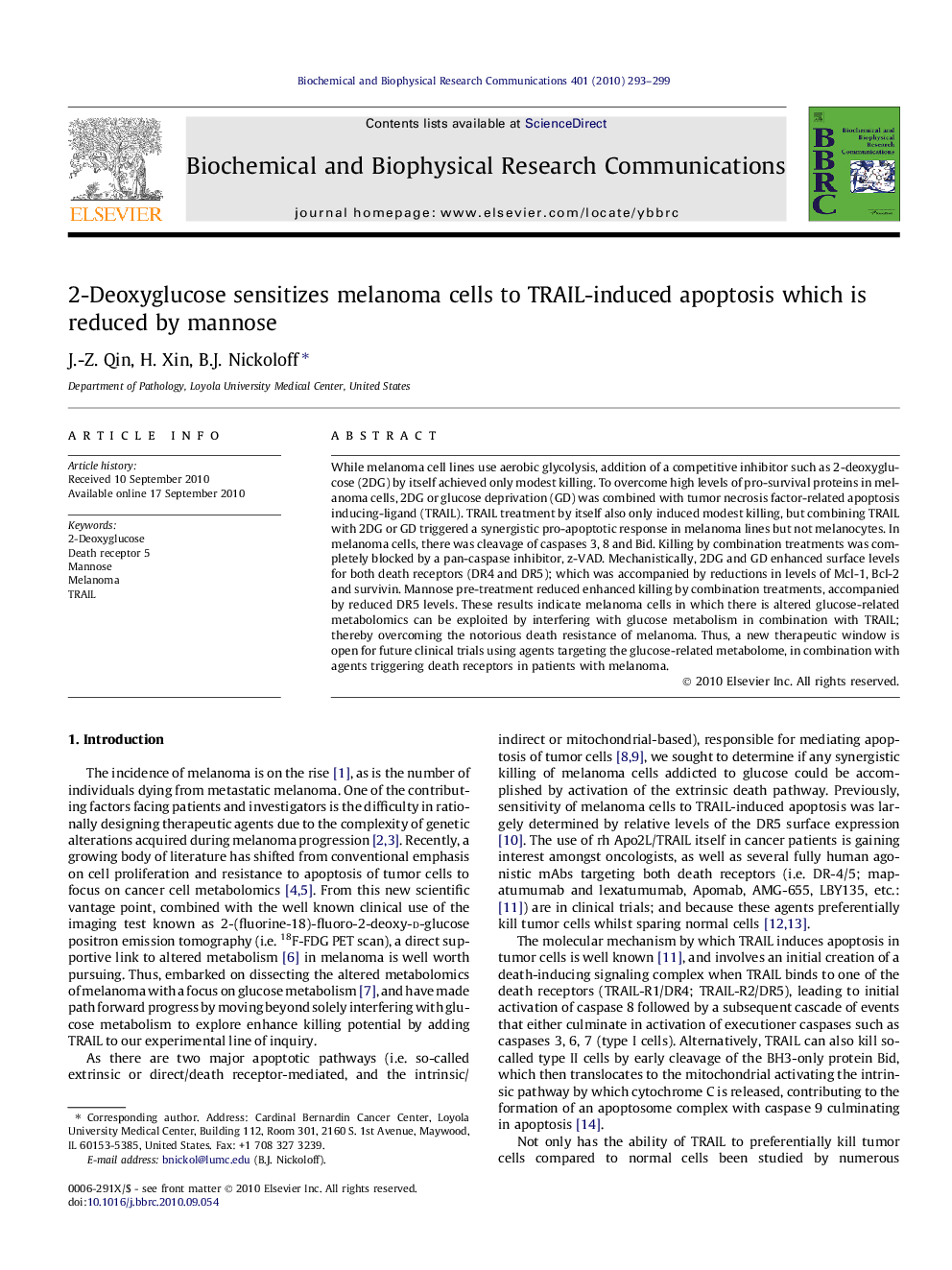| Article ID | Journal | Published Year | Pages | File Type |
|---|---|---|---|---|
| 1931065 | Biochemical and Biophysical Research Communications | 2010 | 7 Pages |
While melanoma cell lines use aerobic glycolysis, addition of a competitive inhibitor such as 2-deoxyglucose (2DG) by itself achieved only modest killing. To overcome high levels of pro-survival proteins in melanoma cells, 2DG or glucose deprivation (GD) was combined with tumor necrosis factor-related apoptosis inducing-ligand (TRAIL). TRAIL treatment by itself also only induced modest killing, but combining TRAIL with 2DG or GD triggered a synergistic pro-apoptotic response in melanoma lines but not melanocytes. In melanoma cells, there was cleavage of caspases 3, 8 and Bid. Killing by combination treatments was completely blocked by a pan-caspase inhibitor, z-VAD. Mechanistically, 2DG and GD enhanced surface levels for both death receptors (DR4 and DR5); which was accompanied by reductions in levels of Mcl-1, Bcl-2 and survivin. Mannose pre-treatment reduced enhanced killing by combination treatments, accompanied by reduced DR5 levels. These results indicate melanoma cells in which there is altered glucose-related metabolomics can be exploited by interfering with glucose metabolism in combination with TRAIL; thereby overcoming the notorious death resistance of melanoma. Thus, a new therapeutic window is open for future clinical trials using agents targeting the glucose-related metabolome, in combination with agents triggering death receptors in patients with melanoma.
Research highlights► Combining 2DG or GD with TRAIL overcame the notorious apoptotic resistance of melanoma cells. ► Combination treatment enhanced DR and Grp78 levels while reducing survival protein levels. ► Mannose reversed killing by lowering 2DG or GD enhanced DR and GRP78 but restored survival proteins.
